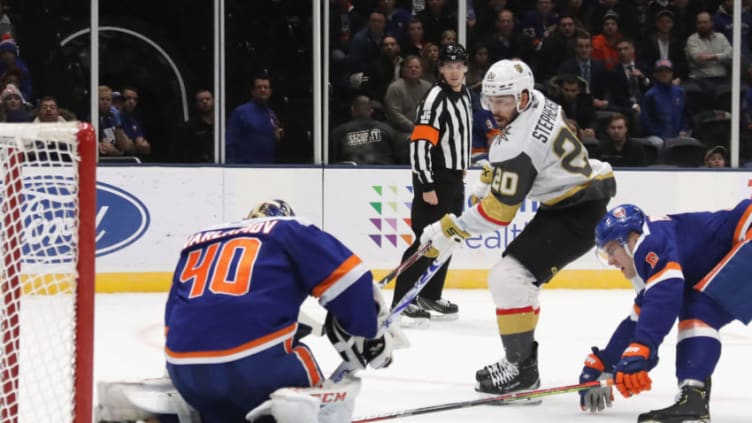Islanders Should Abandon the Two-Goalie System

The New York Islanders have deployed a two-goalie system to begin the season. While Semyon Varlamov and Thomas Greiss are playing some of the best hockey in their careers, it may be time for the Isles to abandon this system.
Let me start off by saying that the Islanders are very lucky to have two strong goalies. Varlamov and Greiss both rank in the top 10 in SV% and GAA out of all the NHL goalies who have appeared in at least 15 games.
Having two solid goalies, like Varlamov and Greiss, is a luxury uncommon to most teams. It is also a luxury which the Isles have used, and should continue to use, to their advantage. That being said, I have a couple of concerns with the two-goalie system.
The first concern is that this system makes it difficult for Varlamov or Greiss to get in any type of rhythm. Coach Trotz has said all year that if either goalie were to get particularly hot, he would ride the hot-hand. But how is either goalie expected to get hot when they have to ride the bench every other night?
Both goalies have been hot to start the season, but you have to wonder just how long they will be able to maintain their strong performances without seeing any sort of consistent workload.
My other concern with the two-goalie system is that it simply has not traditionally been tied to success in the NHL. If the Isles were to continue using their two-goalie system, both goalies would finish the season with 41 starts, barring any injuries. In comparison, no Stanley Cup-winner in the past decade had a backup goalie who started more than 34 games.
Let’s take a look at the 2014-15 Stanley Cup-winning Chicago Blackhawks team. Corey Crawford was the starter that year, and made 57 starts for the team. Meanwhile, Scott Darling and Antti Raanta made 13 and 12 starts, respectively.
The discrepancy in starts was not due to Darling or Raanta being particular ineffective. In fact, they were both very good with SV%’s equal to .936 and GAA’s no greater than 1.95.
Rather, the Blackhawks let Crawford start most games, allowing him to develop into a solid rhythm, and then confidently turned to Darling or Raanta when he needed a day off.
The same story could be told with the other Stanley Cup-winning teams of the past decade. Even though the 2010-11 Stanley Cup-champion Boston Bruins had Tim Thomas and Tuukka Rask on their roster, they still started Thomas in over 67% of the games.
Ultimately, these teams all had multiple capable, if not dominant, goalies. Yet these teams recognized the importance of having one starter who could develop into a rhythm, and at least one strong backup who they could confidently turn to every so often. I believe it is time for this Islanders team to do the same.
Want your voice heard? Join the Eyes On Isles team!
Varlamov is being paid starting-goalie money, so he should at least be given the opportunity to be the starter on most nights. Meanwhile, Greiss has more than proven his value, and the Islanders should feel extremely confident in slotting him in when Varlamov needs a night off.